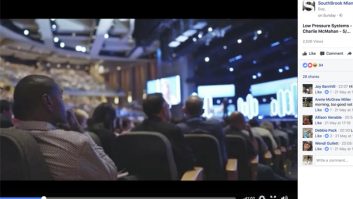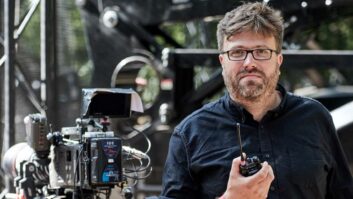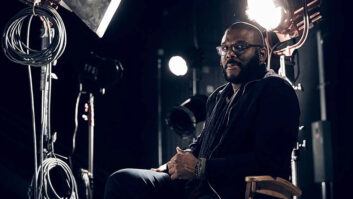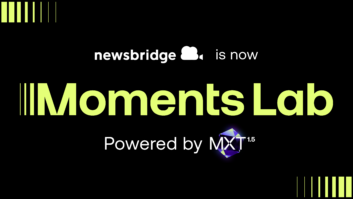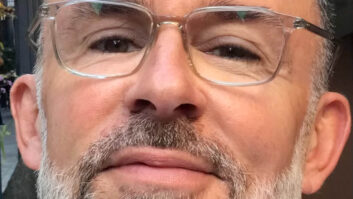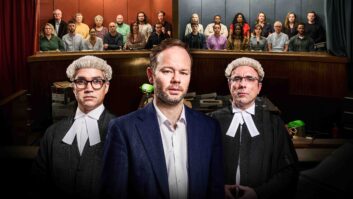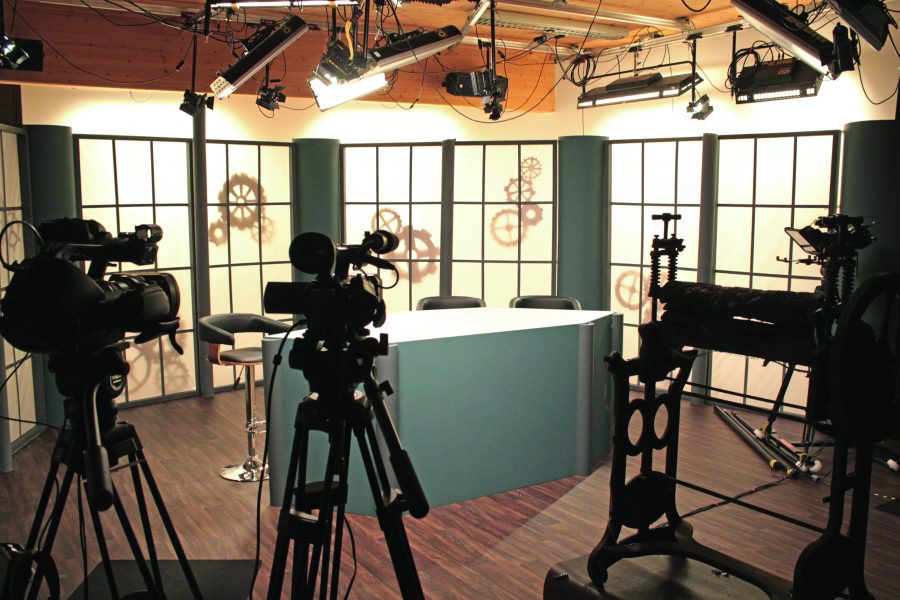
There was a time, back in the 1950s, when television in the UK (just BBC and the commercial contractors in those days, of course) used to shut down between 1815 and 1925 on a Sunday to allow viewers to attend evening services at their local church. That rule was eventually relaxed, but generally only ‘religious’ programmes were permitted between these times. Beyond that, both channels usually carried a church service each Sunday morning, while each evening ended with an epilogue, where a message with a scriptural theme was delivered immediately prior to shut down.
Things have moved on, and while religious programmes are still provided by the main broadcasters, many channels have appeared to cater for the spiritual needs of viewers. On the Sky EPG, for instance, around 15 channels appear in the religion category. Further, some broadcasters have turned to the internet to provide programming for their viewers.
One organisation in the latter category is United Christian Broadcasters (UCB). “The way people listen to radio and watch TV has changed dramatically in the past few years and we know it’s important that we adapt to this and give people more ways to engage with us,” explains Thom Price, head of TV programming. “In 2015, we focused on new platforms, which meant UCB’s radio and TV is available to millions more homes in the UK. This was a decision taken by UCB because we were finding that more and more people were watching and listening to our stations through computers and mobile devices.”
In order to help with this transition, the organisation invested in UCB Player, allowing viewers to watch and listen to all of UCB’s content, both live and on-demand.
No change
The switch to internet-based programming has not changed the operation of UCB’s headquarters at Stoke-on-Trent. Here, two studios operating to broadcast standards are used to produce a number of programmes. These include Facing the Canon, a 60-minute interview, Real God Real People, a five-minute testimony, Since I Became a Christian, a 30-minute testimony, The Think Tank, a half-hour current affairs discussion, God Spots, 60 seconds of inspirational thoughts, and Now Hear This, 30-minute acoustic sets with an interview with the artist.
“In our studios, we use Sony EX3 and Panasonic GH4 cameras,” reports Malcolm Salt, UCB’s television production co-ordinator. “In the gallery we have installed a DataVideo SE 1000 vision mixer – selected for price and functionality, a PreSonus Studio Live 16.0.2 audio console and Adobe After Effects for graphics.”
Salt says that Edius was selected as UCB’s editing system because of its compatibility with a wide range of file formats and intuitive UI.
UCB also transmits programmes from other producers, and these are delivered to the broadcast centre via FTP and occasionally hard drives containing uncompressed master files.
“We make use of IP technology for the delivery of playout signal,” says Price. “A ‘Playbox’ software playout system from ‘Databox’ delivers to our streaming partner via an IP stream.”
So what does Price see as the biggest changes in religious broadcasting in recent times? “The improvement of the quality of programming brought about by the reduction of cost and ease of access to production equipment. This, along with higher computer literacy amongst producers, allows for more complicated productions.”
Serving Bulgaria
Since Bulgaria’s transition from Communism in 1989, the Christian community in that country has enjoyed greater freedom. Studio 865 is a media association founded and run by local Bulgarian Christians that has seized the opportunity and built on that liberty.
“The name Studio 865 was selected because in the year AD 865, Boris 1 proclaimed Christianity the official religion of Bulgaria,” explains Stoyko Petkov, director of Studio 865. “Utilising TV, radio, internet, and print our aim is to encourage the Christian community in Bulgaria, but just as important, to address the needs of those yet untouched by the Gospel.”
In recent times, Studio 865’s distribution has become more focused towards online platforms than on traditional media channels. “As with other niche programming there are more opportunities in internet distribution and digital TV compared to terrestrial television,” states Petkov. “There is also much more content available, although it’s mainly church services and teaching. For ‘small languages’, it is now possible either to translate or produce more content with higher quality, thanks to the drop of prices for production and distribution.”
Petkov continues, “Our main base is in the capital Sofia where we have one studio equipped with Sony EX3 cameras. In the gallery, we use a Sony MCS-8M HD-SD vision switcher with a built in audio mixer. That unit was chosen because it suited both our operational and budgetary needs. Similarly, we opted for Final Cut Pro 6 because of its price, stability and quality of output.”
Alongside its own programming, Studio 865 transmits content from other producers. Playout comes through a PlayBox Technology Broadcast Automation System.
Studio 865 has made significant progress in its mission, but how does Petkov see the future of religious broadcasting? “The distribution of religious programming in future may be more in ‘narrowcasting’ or ‘slivercasting’ than the big broadcasting channels. However, quality of content, ready access to it and the level of interactivity of the platform will be the key for future success.”
He concludes, “I firmly I believe that religious audio-visual content can reach a very big audience if it is produced and distributed according to the new expectations of online users. Our message is not just for those who already have a faith, but also for those who are looking for answers.”
Church has a Vivid imagination
In order to cope with the around 10,000 people who wish to attend the Hillsong Church in London, four services take place at the Dominion Theatre each Sunday. Hillsong, whose headquarters are in Australia, also has other sites in the UK that can be linked to the London service, if necessary. The church also runs a broadcast channel on the Sky EPG.
Some of the broadcast development work in the UK has been carried out by Vivid Broadcast, based in Surrey. “I became involved with the organisation as a consultant about four years ago,” explains Rory Springthorpe, director of Vivid. “At the time, they were operating just two SD cameras in a mobile PPU. Since that time, as part of a major refit, we have seen the infrastructure built up, including the construction of a gallery within the theatre and trained volunteers within the congregation to use industry standard equipment.”
The current set up sees four Sony HDC cameras in the auditorium, two For-A HVS vision mixers and DiGiCo sound consoles.
Full inventory
“Suppliers were surprised that a church needed this level of broadcast kit,” states Springthorpe. “The reason for two vision mixers is to accommodate both the televised output and the in-house screens. People in the theatre don’t need to see the mixed TV output with wide shots – they are already there! So one HVS is used for driving the LED screen and set video products while the other performs a more conventional full production cutting role.”
He goes on, “One of the next projects is implementing a full IP encoding system that will allow time-shifted broadcasts to other UK sites – and allow two-way production from those other venues.”
Beyond the weekly service, Vivid Broadcast provides OB facilities for other church events. “We use our trucks or one of our flypacks portable production units,” explains Springthorpe. “For example, covering backstage TV for Hillsong online, or at the carol service at Wembley Arena, we provided nine cameras with a full broadcast kit, including Furio systems and jibs. Last year was sold out and this year they’re looking to do three packed out services in one day – it’s great to see the growth of the church.”
He continues, “Hillsong has far-reaching plans for the future. It may have its own studio in due course. It is moving content to YouTube, and has just launched a youth show, Fearless, on TBN that is produced by young people. When you consider the church in London has 1.2 million ‘Likes’ on its Facebook page, this is a growing market sector.”
